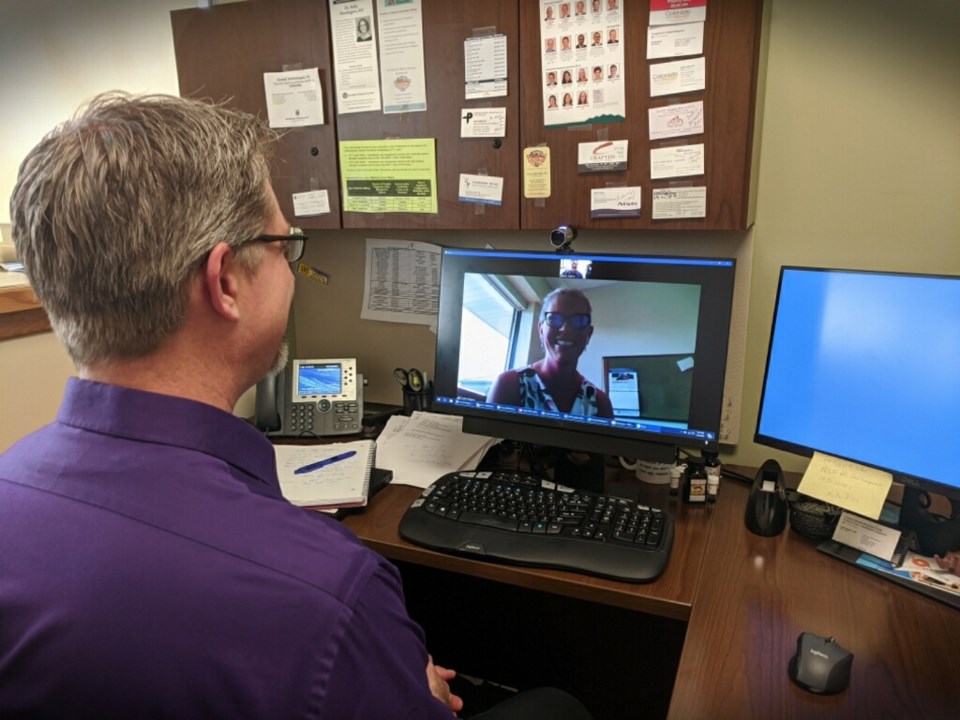To protect her family from catching COVID-19, Lindiwe Zuppas decided earlier this month to avoid a trip to her doctor’s office and join the growing ranks of patients who ask for a health consultation through her computer.
“I am taking this pandemic very seriously and I want to do my part from keeping it from spreading,” Zuppas said. Her son and daughter both have asthma and are considered at high rise for contracting the coronavirus, she said.
With that in mind, she quickly agreed to a virtual consultation with her Centura Health doctor to talk about her vitamin deficiency and other problems that could be handled with screen time. Doing so meant she avoided risking exposure in a waiting room with other patients and medical professionals.
“What if I’m a carrier and I don’t know it,” Zuppas said. “I don’t want to take the risk of bringing this virus home or giving it to someone else.”
Zuppas said the leap into telemedicine was the safest way to keep herself and her family healthy in the era of COVID-19. She is not alone.
Clinics and hospitals report huge jumps in the use of telemedicine, which allows doctors and nurses to diagnose and treat patients through telephone or computer. Telemedicine is part of the broader range of services offered under the umbrella of telehealth.
Telemedicine has been around for decades, especially among specialists and in rural care facilities, according to health care officials.
But the COVID-19 outbreak has led doctors and health care leaders to rewire their thinking about patient care and to boost online capabilities to make it easier to reach out to patients leery of traditional visits to the doctor’s office.
“We realized early on as a group this is the way to keep caring for our patients as COVID-19 grew bigger,” said Dr. Judd Dawson, a family practitioner with Centura Health Physicians Group in Longmont.
Few clinics in the north Denver area were wired to deliver telemedicine to a vast pool of patients before COVID-19, Dawson said.
But that changed in March when statewide stay-at-home orders were implemented. Meanwhile, the Trump administration lifted Medicare requirements for telemedicine visits so doctors could be compensated as they would for an in-person visit, Dawson said.
To make it easier for doctors and other health care professionals, Centura’s IT department began expanding telemedicine capabilities, Dawson said.
“We have a real robust IT group and they got us up running quickly, Dawson said. “And the patients jumped on it almost immediately.”
Currently, about one-third of the patient visits with doctors among Centura clinics in the north Denver area are through telecommunication technology, he said.
Other health systems report similar spikes in usage.
Before COVID-19, health systems with relatively high telehealth adoption performed fewer than 100 visits per day, according to the Journal of the American Medical Informatics Association.
Now, many are seeing more than 600 patients per day via video, with many in-person clinics replaced with video or telephone visits, according to JAMIA.
Doctors are quick to point out that telemedicine is not a substitute for an in-house exam for serious ailments that demand closer inspection.
“There are certain things you can only diagnose with a physical exam,” said Dr. Antony Pearson, chief medical officer at Longmont United Hospital. “You can poke around and see what is going on and you can’t do that with a televisit.”
Zuppas agrees. Still, her two computer-aided visits went well and she got the information she needed. She will be happy to do more virtual visits in the near future.
“I think a lot of people now are avoiding going out but still need that conversation with a doctor,” Zuppas said. “This is the tool for this era.”



